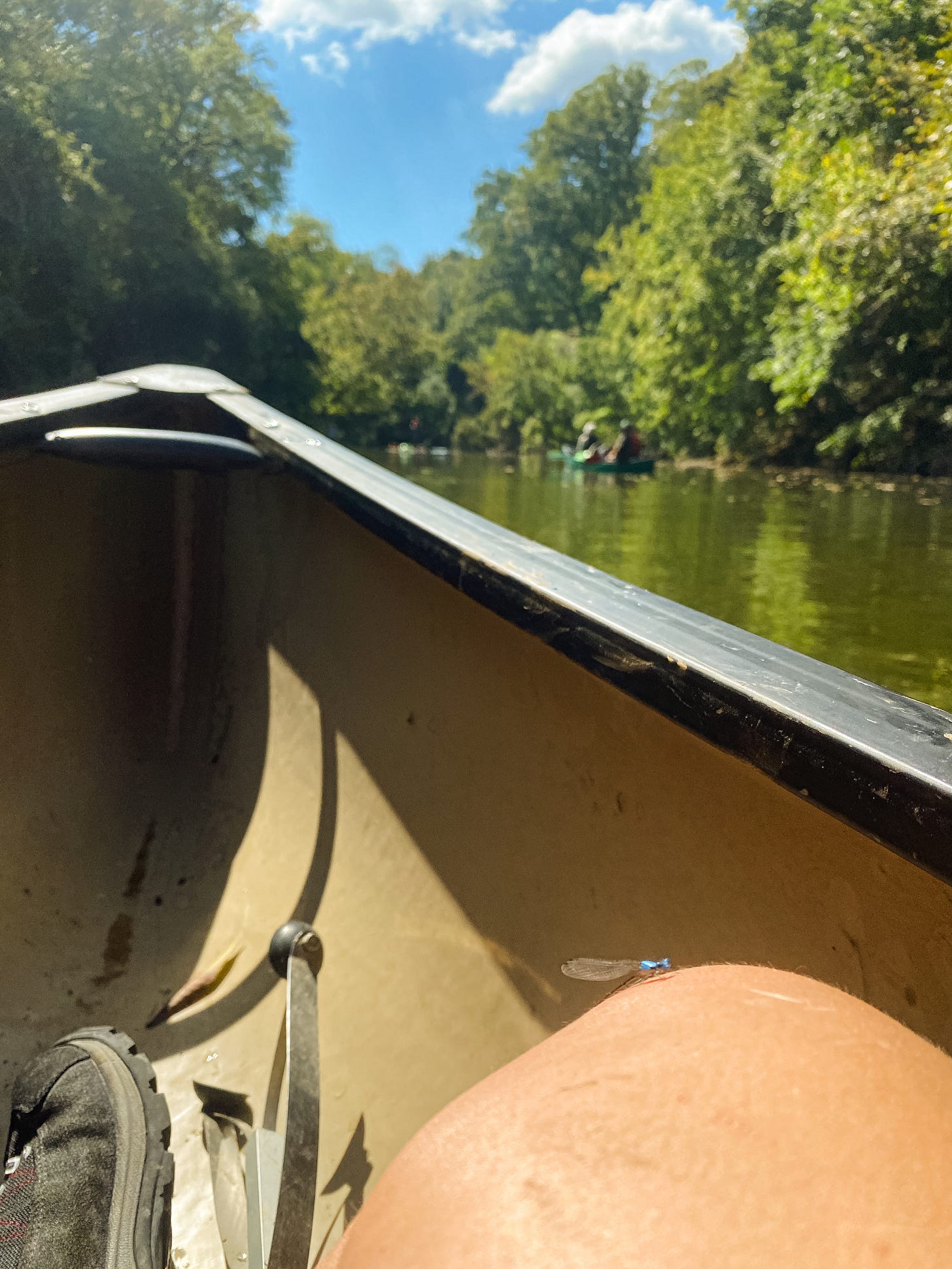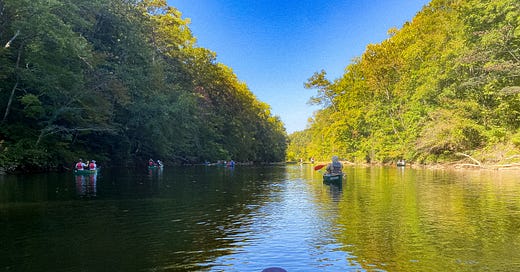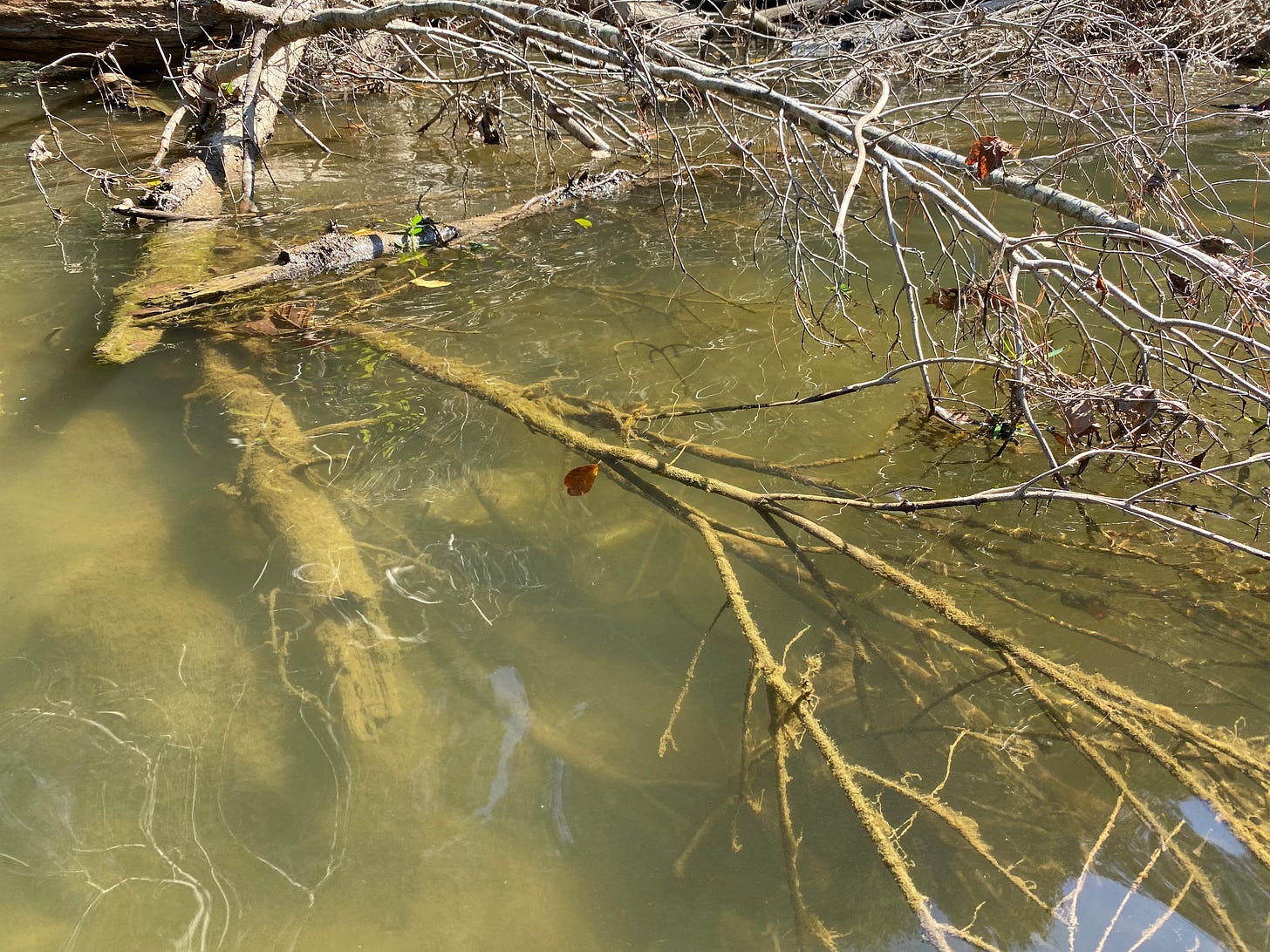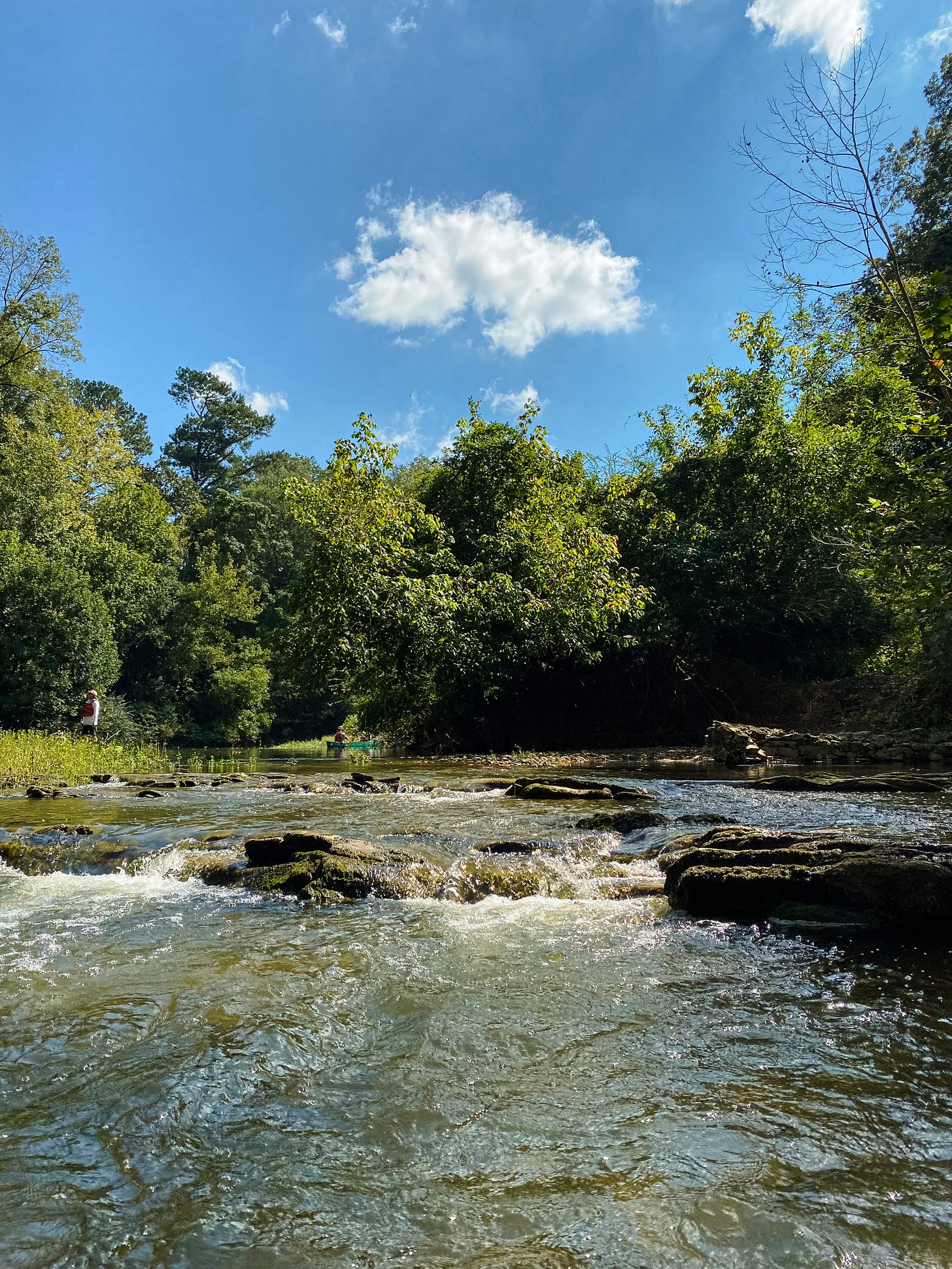This one is short and sweet (just like an alligator snapping turtle)
It’s easy to miss the wonders of the river if you aren’t looking. My brother has an eye for salamanders and lizards. My sister can always find snails and slugs. My mother is the mushroom hunter of the family. For me, it’s mussels. “How are you finding these?” someone asked me. It was the first weekend in October and I was on a clean-up with the Cahaba River Society.
I’m usually looking down, just seeing what’s there. It may have begun as a precursor to avoiding pinches or nibbles from things with teeth. A flicker of light, a rock that ripples or curves a certain way. I don’t have a problem reaching down with my bare hands and shuffling the bottom of the river touching a hundred unknown things—those living, things that never lived, and those who have fallen off this mortal coil.

On this stretch of the Cahaba, from 280 to Caldwell Mill Road, there are about five dams you have to pass over. To be honest, I prefer the circus of hopping in and out of the boat + pushing it over the slab of concrete over dredging through shallow water + having to pull the boat for stretches. This is especially true if you have four full bags of litter and trash in the canoe.
After we maneuvered the third dam, the first half of the group was gathered off on the banks of the river. To anybody, it looked like a group of people talking—perhaps they were trying to lift a hefty tire or a used car battery out of the water. Instead, they waved us over. Excited and hushed whispers pulling the rest of us over.
They had seen a wonder swim across the river as we lugged our boats over the dam. It was hiding now, beneath the broken branches and the mossy rocks: an alligator snapping turtle.
Alligator snapping turtles get their name from their jaws. Strong and distinct, bumpy and sharp—the peaks on their shells mimic the jagged scales of an alligator. They’re massive, this is no turtle you’ll find in the tanks at PetSmart. They’re generally found in bodies of water that flow into the Gulf of Mexico.
These turtles prefer to live in habitats with canopy covers, submerged dead trees, shrubs, and even beaver dams. It’s a rare experience to see one like this in the wild, especially on this stretch of the Cahaba as dams can impact their movements.
We snapped the photo and our group leader let us know they planned to reach out to The Urban Turtle Project. The organization is an Alabama-based group that tracks the local turtle populations to ensure their survival. Alabama happens to have the largest biodiversity of turtles in the United States.
This week’s touchgrassfriday is a bit unconventional and a bit less flowery. Let it serve as a gentle reminder that the next time you’re outside take your time and observe slowly, otherwise, you might miss a rare wonder.
Also:
Queen of the Tetons — The bear known as Bear 399 was killed by a vehicle on Wednesday night. She was the oldest known mother bear to produce yearlings. She raised 18 cubs overall in her 28 years of life, 10 living to adulthood. (National Geographic).






